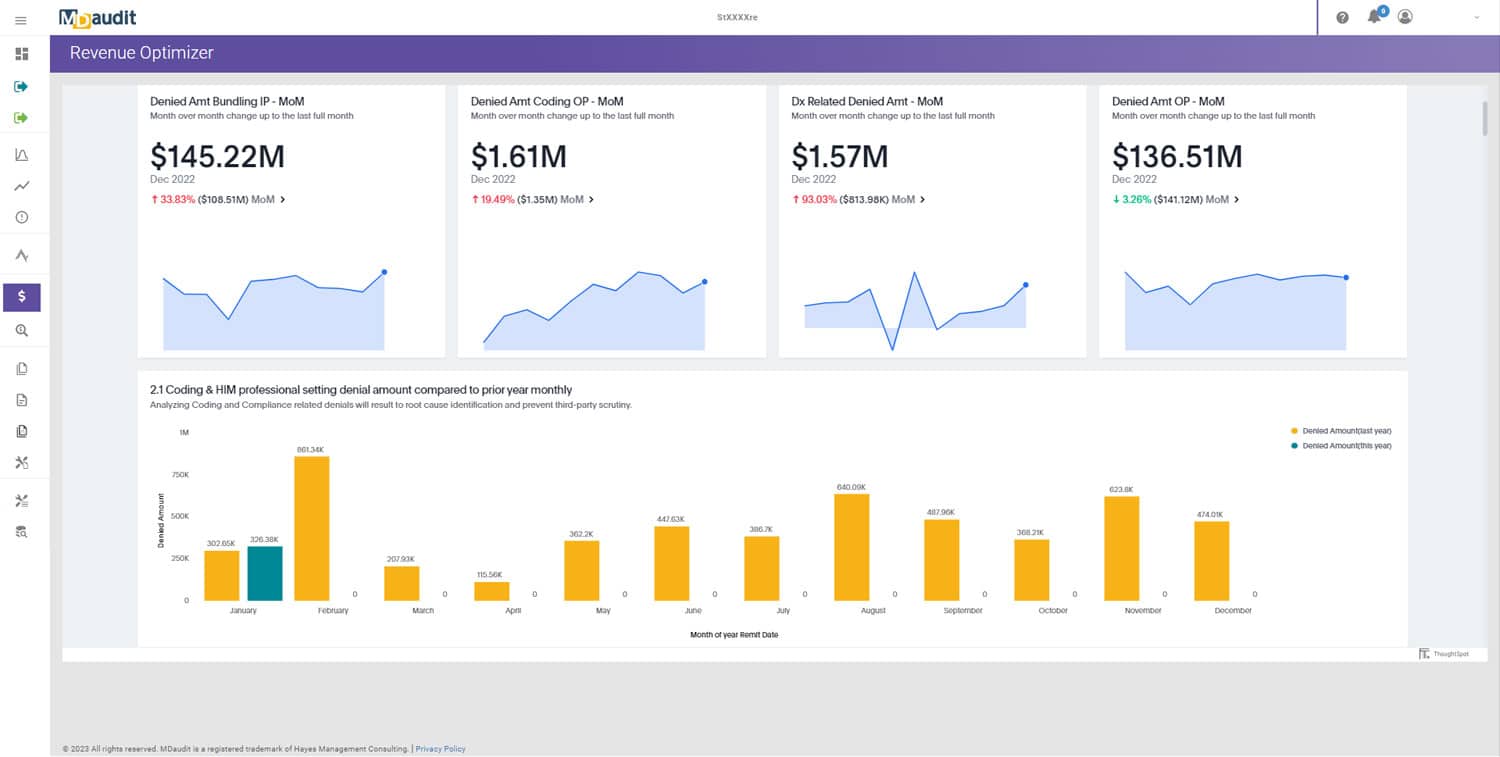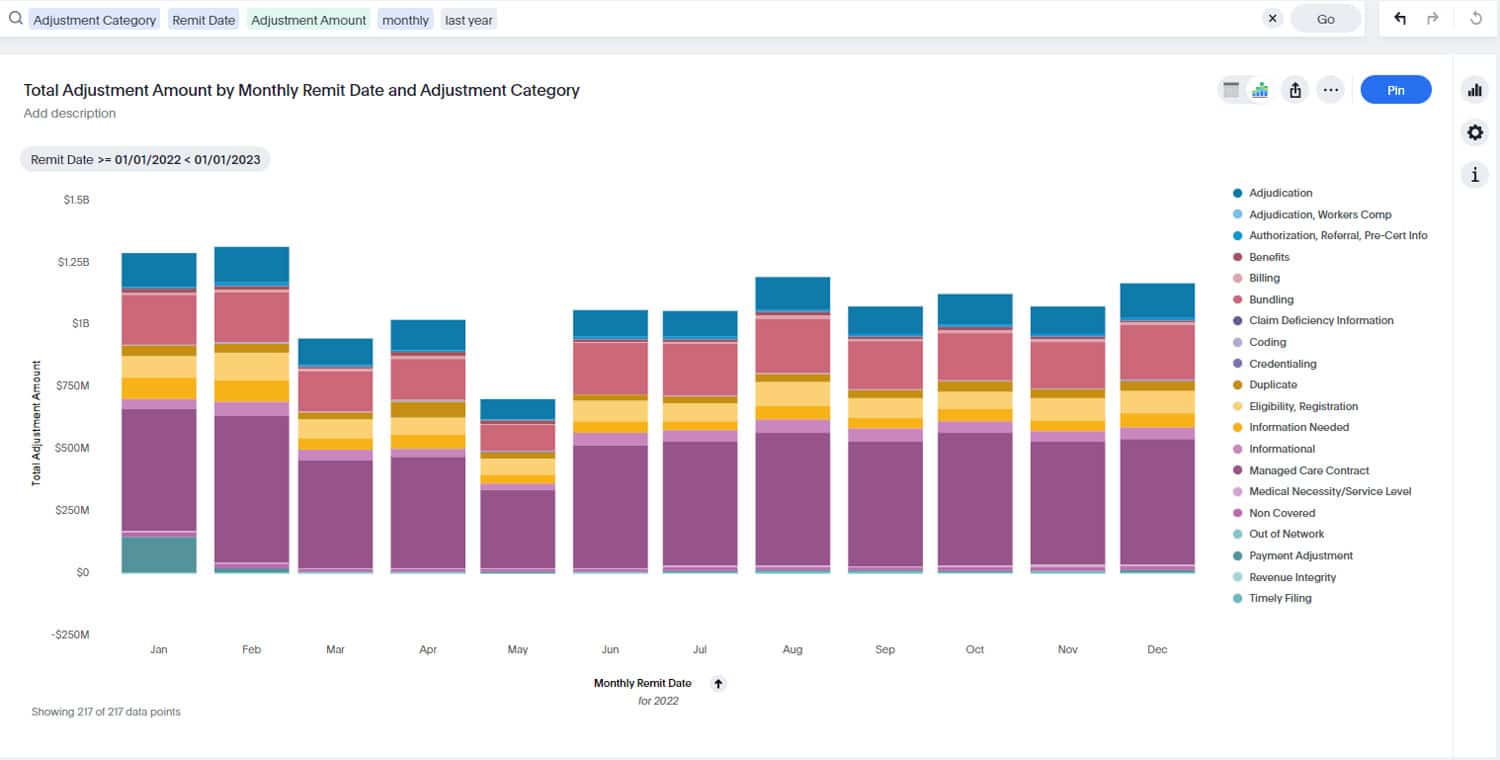Audit programs are essential in healthcare organizations. They uncover compliance risks, identify coding errors, and flag documentation shortfalls. But too often, audits are seen as reactive exercises—important for correcting mistakes but disconnected from larger business strategy.
Audit outcomes are one of the richest, most underutilized sources of strategic intelligence. They show not only how well internal teams perform but also how payers interpret policies, enforce contracts, and target claims. The problem isn’t a lack of data. It’s that most organizations fail to convert audit findings into a continuous learning cycle that drives both operational improvements and payer negotiations.
With MDaudit, that gap is closed. Through Audit Workflows, Coder Workflow, Revenue Optimizer, and Payer Audit Management, healthcare organizations can turn findings into action, action into measurable outcomes, and outcomes into negotiation leverage.
Why Audit Data Belongs in Payer Strategy
Denials are often treated as internal issues: coders missed a detail, physicians didn’t document completely, or front-end processes failed. While that’s sometimes true, denials also reflect payer behavior. Each rejected claim provides clues about how carriers are applying policies, enforcing utilization controls, or shifting costs.
Without structured analysis, these denials remain random and reactive. But when aggregated across payers and time, patterns emerge:
- One payer downgrades certain DRGs more aggressively than peers.
- Another consistently denies high-cost infusion drugs despite proper documentation.
- A Medicaid managed care plan enforces prior authorization requirements inconsistently.
These aren’t just compliance problems. They’re negotiating positions. Data transforms anecdotal payer “difficulties” into concrete evidence that can shape contract terms and financial outcomes.
The Continuous Learning Cycle
A modern compliance and revenue integrity strategy is cyclical, not linear. Audit findings shouldn’t stop at education—they should fuel ongoing organizational learning and payer strategy.
1. Audit Findings
Every cycle begins with identifying issues. Audits surface documentation gaps, coding errors, and payer-specific denials. With Audit Workflows, findings are captured systematically, categorized, and tied to root causes.
2. Coder Education
Audit results feed into Coder Workflow, where coders receive timely, case-based education. Instead of generic refresher courses, coders learn from specific examples that directly impacted claims.
3. Cross-Payer Analytics
Once individual errors are addressed, the focus shifts to systemic issues. Using denial analytics across multiple payers highlights whether problems are internal or external. If five carriers deny the same infusion therapy, that suggests a documentation or coding issue. If only one payer denies it, that’s a payer behavior problem.
4. Executive Reporting
Insights are elevated into financial terms using Revenue Optimizer. Leaders see not just that claims are being denied, but how much revenue is at stake, how long cash is delayed, and what interventions yield results.
5. Payer Negotiations
Finally, validated data informs managed care discussions. Leaders go into payer meetings with evidence: “Your denial rate for infusion therapy is 45% higher than competitors. Here is the financial impact. Here is the documentation we’ve confirmed is compliant.”
This closes the loop—turning audits into leverage that improves both compliance and revenue integrity.
Scenarios That Illustrate the Cycle
Medicare vs. Commercial Payers
Medicare contractors may deny cardiac procedures because elements in NCD/LCD documentation are missing, while commercial payers deny the same claims because they lack prior authorization. Audit findings address documentation internally, while cross-payer analytics highlight commercial payer inconsistency. Together, the organization educates coders and negotiates clearer contract terms.
Medicaid Managed Care Plans
Denials in Medicaid MCOs often vary widely by region or plan. Audit data reveals inconsistent enforcement of medical necessity criteria. Financial reports quantify the impact, allowing leaders to escalate issues to state regulators or push payers for contract revisions.
Pharmacy and Specialty Drugs
High-cost infusion drugs drive a disproportionate share of denials. Cross-payer analysis shows multiple carriers enforcing stricter diagnosis specificity. Coders are educated on documentation requirements, while payer discussions are supported with comparative data showing peers reimbursing similar claims.
Imaging and Site-of-Care Restrictions
Commercial payers continue to steer advanced imaging and infusions away from hospital outpatient departments. Analytics reveal shifting patterns, and leaders present evidence during negotiations to secure carve-outs or transition plans.
DRG Downgrades
When several payers consistently downgrade the same DRGs, audit evidence suggests systemic documentation vulnerabilities. Coders receive targeted education, while revenue leaders quantify financial losses to negotiate contract terms that reduce disputes.
Governance and Best Practices
Building a continuous learning cycle requires structured governance:
- Ownership: Create a working group with revenue integrity, HIM, compliance, and managed care leaders. This team decides priorities, approves education, and manages escalation.
- Cadence: Review denial trends monthly, update education quarterly, and re-baseline annually.
- Standardization: Normalize denial codes across payers into a single taxonomy for reliable comparison.
- Reporting: Use Revenue Optimizer to present quarterly updates framed in financial impact, not just counts.
- Negotiation Packages: Prepare payer-specific evidence, combining audit findings, financial impact, and peer comparisons.
Perspectives Across Leadership Roles
CFO and Finance Executives
For financial leaders, audit-to-negotiation cycles reduce revenue leakage, improve cash predictability, and strengthen contract outcomes.
HIM Leaders
Coder education linked to audits reduces repeat errors and denial-driven rework, while reinforcing professional growth for coding teams.
Compliance Officers
A defensible record of audits, corrective actions, and payer engagement demonstrates proactive risk management during regulatory reviews.
Managed Care Leaders
Armed with data, negotiators move from anecdotal complaints to evidence-based discussions, improving outcomes and relationships with payers.
Case Snapshots
Academic Medical Center
Audits at a large academic medical center revealed documentation gaps in inpatient coding for complex cardiac procedures, a leading cause of denials and DRG downgrades. According to Harmony Solutions, up to 86% of denials are potentially avoidable through improved clinical documentation practices.
By targeting coder education and strengthening CDI processes based on audit findings, the organization reduced repeat errors and denial-driven rework. Revenue analysis tied these improvements to measurable financial impact, which leadership used to negotiate clearer terms with two commercial payers that had been aggressively downgrading claims. This aligns with industry evidence showing that documentation-driven denial reduction directly improves contract leverage and cash flow predictability.
Regional Health System
A regional health system experienced a surge in denials from a single commercial payer for high-cost infusion and specialty drugs, even when documentation was compliant. Audit evidence revealed that peer carriers reimbursed identical claims without issue. Armed with comparative data, revenue leaders escalated the matter during managed care discussions.
Industry examples support this approach. A study published in Oncology Practice Management found that implementing prior authorization and audit-informed review tools for chemotherapy significantly reduced both denial rates and total treatment costs by improving clinical alignment and payer transparency. Following similar evidence-based negotiations, the payer revised its policy, resulting in a 40% reduction in pharmacy-related denials and faster reimbursement.
Large Physician Group
A regional health system experienced a surge in denials from a single commercial payer for high-cost infusion and specialty drugs, even when documentation was compliant. Audit evidence revealed that peer carriers reimbursed identical claims without issue. Armed with comparative data, revenue leaders escalated the matter during managed care discussions.
Industry examples support this approach. A study published in Oncology Practice Management found that implementing prior authorization and audit-informed review tools for chemotherapy significantly reduced both denial rates and total treatment costs by improving clinical alignment and payer transparency. Following similar evidence-based negotiations, the payer revised its policy, resulting in a 40% reduction in pharmacy-related denials and faster reimbursement.
Future Outlook: AI in Payer Strategy
The future of audit-to-negotiation cycles is AI-driven. With AI-Powered Technology, organizations will:
- Detect emerging payer patterns earlier.
- Auto-cluster similar denials across carriers.
- Generate draft negotiation playbooks with evidence and financial impact.
- Personalize coder education based on payer-specific risks.
This evolution shifts payer engagement from reactive to predictive—building trust with carriers while protecting revenue.
Turning Insight Into Leverage
Audit outcomes should never end as static reports. They are living data, capable of driving education, informing strategy, and strengthening payer relationships. By building a continuous learning cycle—from audit findings to payer negotiations—organizations turn compliance into competitive advantage.
MDaudit enables that cycle. Through Audit Workflows, Coder Workflow, Revenue Optimizer, and Payer Audit Management, insights are captured, acted upon, measured, and leveraged at the negotiating table.
To see how your organization can transform audit data into payer strategy, visit our demo request page or contact us.







